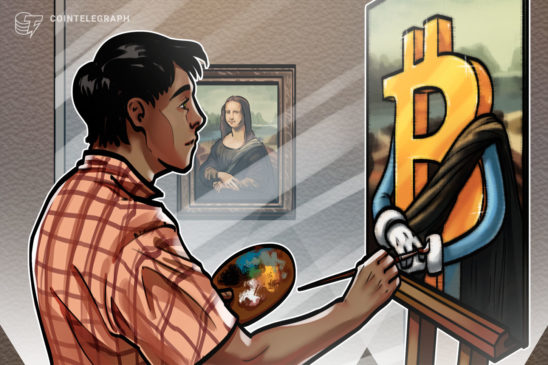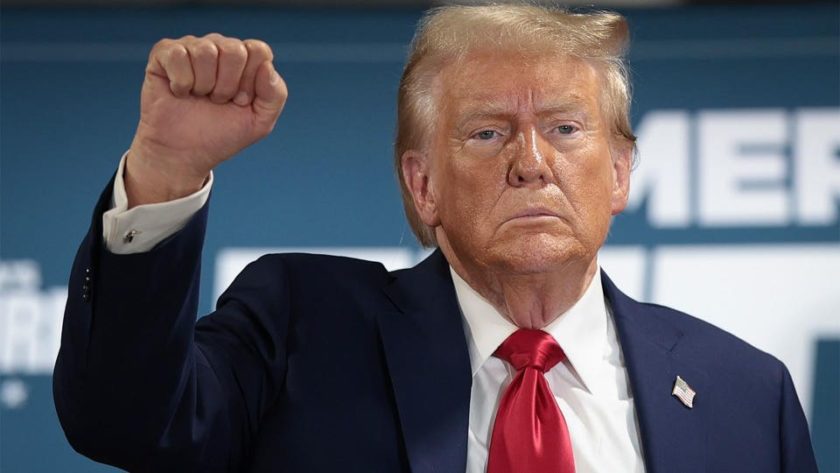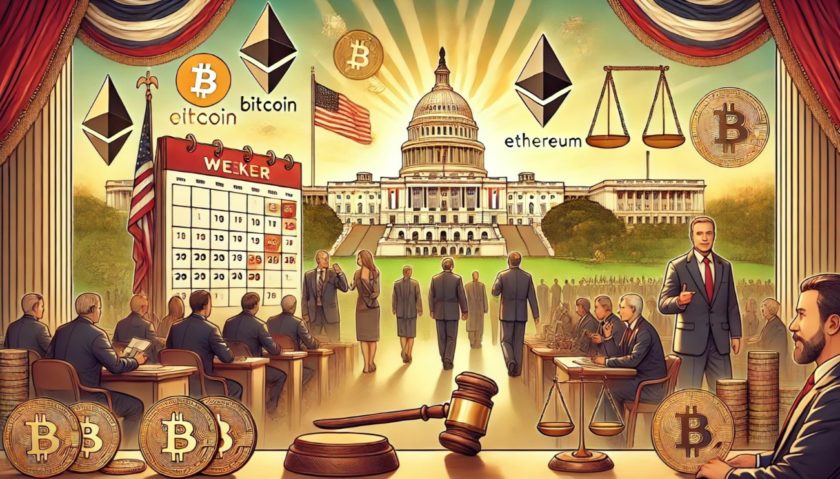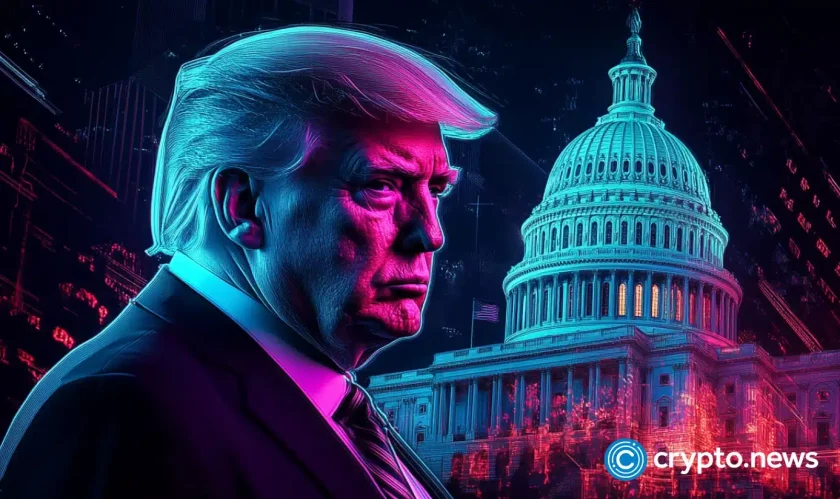On Sept. 23, auction-house giant Christie’s announced plans to sell its first nonfungible token, or NFT, at an auction. This was just one week after the record-setting $100,000 sale at auction of a digital art piece that also used a blockchain-based token to vest the collector’s new ownership rights.
Meanwhile, Anthony Pompliano, Morgan Creek Digital co-founder and partner, wrote on Sept. 21: “I personally believe that the digital art market cap will grow to become larger than the physical art market cap. This may sound ridiculous today.”
Clearly, the digital art market is heating up. Duncan Cock Foster, co-founder at digital gallery Nifty Gateway, told Cointelegraph: “The digital art movement is growing at an incredibly rapid pace. The amount of growth we are seeing has surprised everyone involved I think.”
Much of this can probably be attributed to the coronavirus pandemic that has curtailed travel and shut down art museums. “Digital art allows people to engage with art from their homes, on their computers, on their phones, and send images/videos back and forth easily, which makes digital art especially suited to this time in history,” Blake Finucane, co-author of a position paper on NFT-based art titled “Crypto art: A decentralized view,” told Cointelegraph. But something else may be going on. One of the historic issues with digital art has been that it is “essentially impossible to monetize,” said Finucane, adding:
“If something exists only in digital form — i.e. a gif, a meme, a digital image, a digital video — it is easy to simply screen shot, copy or paste it, or replicate it. A digital artwork’s value is diminished when it comes to selling it commercially because it is so easy to copy — and difficult to track what is, in fact, the original artwork.”
But on the other hand, if a digital artwork is tokenized, the original can always be traced back via token, “making it much easier to garner commercial value because someone can actually ‘own’ the original,” she said.
“It is extremely important for digital art,” Giovanni Colavizza, assistant professor of digital humanities at the University of Amsterdam, told Cointelegraph, adding that tokenization “allows us to exchange and create value from forms of art which previously were problematic.”
On Sept. 18, NonFungible.com, a website that tracks NFT sales data, reported a record high in art-related NFT volume ($162,385), and that was followed on Sept. 22 by the second-highest daily total ever achieved ($123,205). The uptick since June in U.S.-dollar sales of blockchain-based digital art has been notable.
Digital art + blockchain = crypto art
Digital art has been around for decades. Artists began experimenting with computers back in the 1950s and 1960s, but it’s only recently that digital art has been tokenized on a blockchain platform. For instance, Ethereum’s nonfungible token, ERC-721 — which is used by many digital galleries — wasn’t developed and rolled out until early 2018.
The traditional art world often dismisses electronic art, asking: Why bring out digital art when copies can be made from it? — explained Vladislav Ginzburg, CEO at Blockparty. However, “I can use [NFT] technology to prove that I have the original digital asset.” Ginzburg compared digital art to eBooks, which, like digital art, existed for decades without much interest until reading devices such as the Kindle and iPad emerged. “Digital art is having its Kindle and iPad moment right now,” he said while speaking at art festival CADAF Online.
“The art world has been craving a way to collect digital art and NFTs are a picture perfect solution to this problem,” said Cock Foster, adding that everyone should distinguish between digital art and crypto art, the latter being the tokenized or blockchain-enabled version of the former. According to the aforementioned “Crypto art” position paper, which Colavizza also co-authored, the theory goes something like this:
“When a digital asset made by an artist is added to a digital gallery, a token is generated by a smart contract and deposited in the artist’s wallet. The token is permanently linked to the artwork, and is a unique, one-of-a-kind asset that represents ownership and authenticity of the underlying artwork. Once created, the artwork starts its life on the given blockchain, where a fan or collector can purchase it, and where it can be subsequently exchanged, traded or held by collectors like any other rare artifact.”
Will artists embrace the cryptoverse?
Surely enough, obstacles remain. Persuading mainstream artists to use NFTs, an esoteric technology, could be a challenge, arguably. Cock Foster opined: “We had a lot more trouble recruiting mainstream artists to the space six months ago. It is not that difficult anymore.”
Meanwhile, artists see a market that seems to be bubbling over — like with the $100,000 paid for “Right Place & Right Time,” a digital art piece based on Bitcoin’s (BTC) fluctuating price action, or the $55,555 paid on Nifty Gateway in July for artist Trevor Jones’ digital artwork “Picasso’s Bull.”
Moreover, “NFTs are an incredible new creative medium,” said Cock Foster. “Artists are able to do things in the NFT medium that are unable to do with physical art. This is the primary reason that they are interested.”
Secondary sales are an enticement, too. If a collector purchases a digital artwork on Asynchronous Art, the artist is paid a commission on that sale (e.g., 10%). But if the collector sells the artwork two years later, the artist also earns a 20% commission for that secondary sale. This happens automatically — it is written into the software — and is one of the “revolutionary” aspects of blockchain-enabled digital art, Conlan Rios, founder and CEO of Async Art, told Cointelegraph. Such sales were “impossible before blockchain technology came along,” confirmed Finucane.
Another novelty with digital art is the sale of layers, said Rios, whereby collectors can separately purchase “layers” — derivative works made from the masterwork that often offer an owner programming options such as changing the artwork’s colors, rotation or even its “state.” This represents an entirely new revenue stream.
A counterintuitive concept
“The biggest barrier to growth is that people have difficulty understanding what an NFT is,” Cock Foster told Cointelegraph. It’s a counterintuitive concept that people have trouble getting their minds around, but “Once people understand what an NFT is and why the concept is so powerful, they quickly become obsessed.”
Still, Rios told Cointelegraph that “You can’t just plug in your credit card” when you purchase a tokenized artwork. You first must create a digital wallet to hold the NFT, and you should know something about gas fees and the like: “That’s probably the biggest hurdle.” Colavizza agreed: “You need to put a lot of time and effort into knowing how to navigate crypto art. This creates a barrier to entry.”
“Many people are still intimidated by blockchain technology,” said Finucane, telling Cointelegraph that the main challenges center “around the authentication/validation of works before they are entered on to the blockchain.” She added:
“NFTs are particularly useful for artists working in purely digital form, many artists may not be sure how it fits into their practice if they are working in physical mediums like painting, sculpture, etc.”
Elena Zavelev, founder and CEO of CADAF and New Art Academy, told Cointelegraph that “The global digitization that happened during COVID created opportunities for the digital artists that weren’t available before.” Moreover, the popularity of blockchain technology has brought hope that once it becomes more widely accepted within the traditional art community, it will increase monetizing opportunities for digital art. But so far:
“Its adoption remains anecdotal. I wouldn’t be surprised if, in some time, new technology will be easier to utilize than blockchain for the mainstream art community and replace it as a better tool.”
Crypto art still needs to develop an ecosystem more like that found in traditional art, too, with museums, exhibitions, curators, auction houses and fairs, added Colavizza. “The social mechanics which create recognition, prestige and thus value are not there yet, which is both an opportunity and a challenge for collectors and artists.”
Then there’s the question of scalability: Can blockchains really handle all that data flowing their way? Rios runs the gallery business on Ethereum now, using ERC-721 tokens, but he is “blockchain agnostic.” Ethereum is “durable, but expensive and slow,” he told Cointelegraph. The platform’s shortcomings, like high gas prices, might be justifiable for artists creating works for the ages — the platform will be around for decades, presumably — but newer artists might prefer to try out nonfungible tokens on less-expensive platforms that work passably well.
As big as physical art?
Could blockchain-enabled digital art surpass physical art in market value one day, as Pompliano suggested? Not many are prepared to go that far — yet. Finucane told Cointelegraph: “I wouldn’t say that it will ever ‘be as big’ as traditional art but I believe it will have a prominent place in art galleries and art history classes alongside traditional art.”
Cock Foster added: “I don’t see this eating into physical art sales in the short term.” Art is not a zero-sum game. “NFTs are growing by increasing the amount of art sold in the world, not by stealing buyers from the physical art world,” he said, adding:
“The biggest beneficiaries of this are digital artists who could never sell their artwork prior to the invention of NFT technology. One of the artists on our platform just bought a house using the proceeds from his Nifty Gateway sales. Blockchain technology is allowing more artists than ever the chance to live through their art.”
Pompliano, too, noted that there are things that can be done with digital art that can’t be achieved in the physical art realm: “Each piece can incorporate complex movement and motion. […] A single screen on a wall can periodically cycle through different pieces of art at the predetermined direction of the homeowner or art collector.” Digital art is also immune to physical damage because it lives in the ether. Expensive art-insurance coverage may become a thing of the past.
Colavizza told Cointelegraph that digital art interest is surely accelerating in 2020, but this may just be the beginning. “As soon as the Tate [museum] or a similar venue holds an exhibition of digital/crypto art — something that could happen quite soon — things will really happen.”
In brief, digital art generally, and blockchain-based art specifically, have surely gained traction in the time of COVID. Museums are closed — how else can one view art? But for digital art to burst forth over the long term, it has to find a way to reward artists, gallerists and others. They need to make money from their toil.
This is where blockchain technology and NFTs change the game: They furnish enduring proof of an artwork’s uniqueness, enabling it to be sold and resold again and again. And each time that happens, the artist profits. It’s written in the code.




